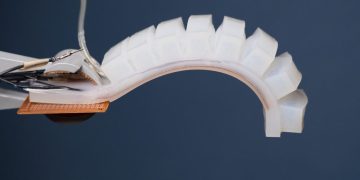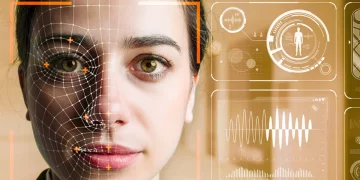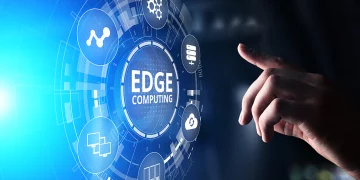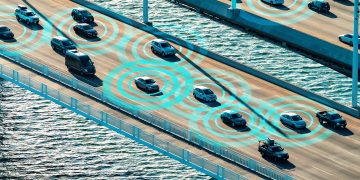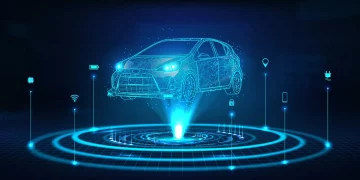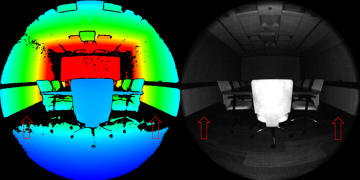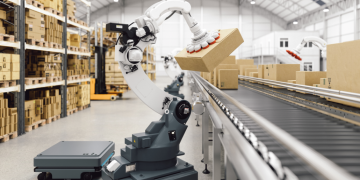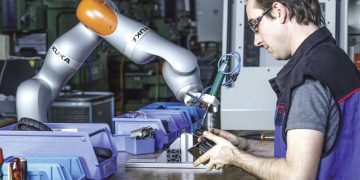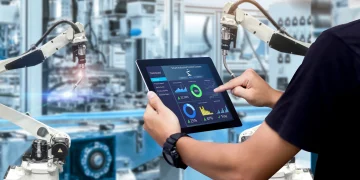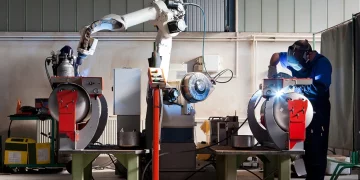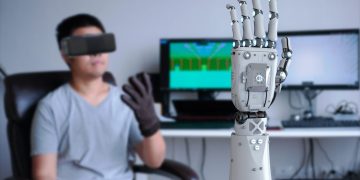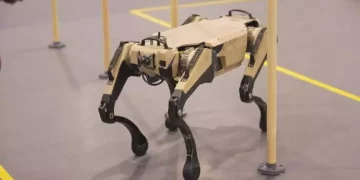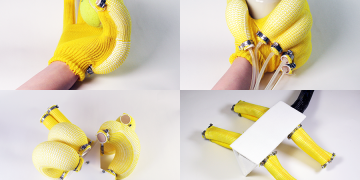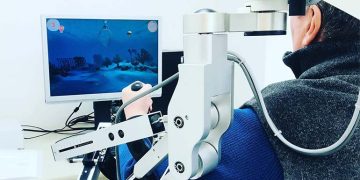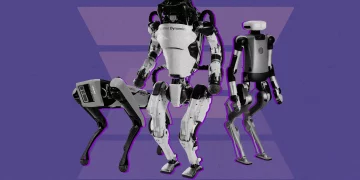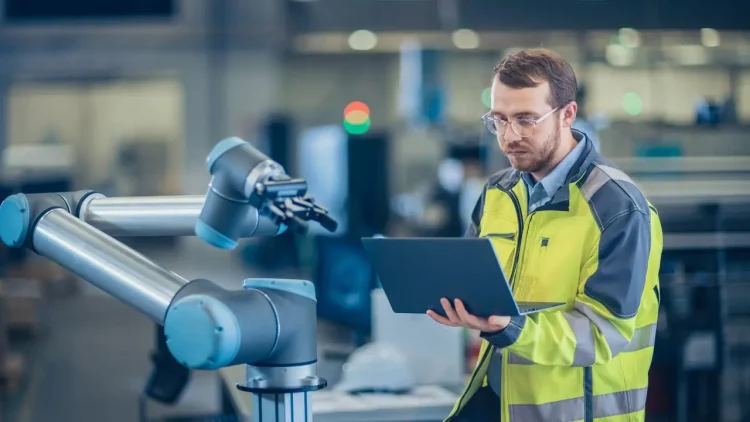Introduction
The rapid advancements in robotics, artificial intelligence (AI), and automation technologies have opened new frontiers for businesses worldwide. Robots, once confined to factories and assembly lines, are now beginning to play a crucial role in nearly every sector, from healthcare and finance to retail and logistics. As we move further into the Fourth Industrial Revolution, it is clear that robots will continue to reshape the global business ecosystem. This article explores how robots will play an increasingly pivotal role in transforming industries, driving innovation, enhancing productivity, and ultimately influencing the economic structure of the future.
1. The Evolution of Robotics in Business
Historically, robots have been most closely associated with industrial manufacturing, where they were deployed to perform repetitive, physically demanding tasks such as assembly, welding, and painting. Over the years, technological advancements in robotics have led to more sophisticated robots capable of performing complex and nuanced tasks.
a. From Industrial Robots to Service Robots
Industrial robots, once isolated from human workers, are now evolving into collaborative robots or cobots. These robots work alongside humans, enhancing productivity without replacing human labor entirely. Cobots are typically equipped with sensors and AI algorithms that allow them to adapt to human actions in real-time, making them suitable for various industries, including automotive manufacturing, electronics, and food production.
The rise of service robots in sectors such as retail, healthcare, and hospitality has also expanded the role of robots in business. In retail, robots can assist with inventory management, stock replenishment, and customer service, while in healthcare, robots can aid in surgery, patient care, and administrative tasks.
b. Robots as Key Drivers of Digital Transformation
The integration of robots with AI, machine learning, and big data analytics has accelerated the digital transformation of industries. Robots are no longer limited to predefined tasks; they can now learn from their environments, make decisions based on real-time data, and optimize workflows across various business processes. As such, robots are seen as pivotal players in the smart factory model, which integrates robots with Internet of Things (IoT) devices, cloud computing, and advanced data analytics platforms to create more efficient, flexible, and autonomous production environments.
2. Robots and Automation: The Backbone of Industry 4.0
Industry 4.0 is characterized by the integration of automation, data exchange, and cyber-physical systems into manufacturing and business processes. Robots lie at the heart of this transformation, enabling businesses to become more agile, efficient, and data-driven.
a. Robots in Manufacturing and Supply Chains
Robots are increasingly being used in manufacturing to automate tasks such as assembly, inspection, and quality control. By adopting robots in these areas, businesses can improve production rates, reduce errors, and lower operational costs. For example, robots equipped with vision sensors and AI algorithms can perform detailed inspections of products, identifying defects that human workers might miss.
In addition to manufacturing, robots play a crucial role in logistics and supply chain management. Autonomous mobile robots (AMRs) are now being used in warehouses and distribution centers to move products, manage inventories, and facilitate last-mile deliveries. Companies like Amazon and Alibaba have already deployed robotic systems on a large scale to automate fulfillment centers, drastically improving operational efficiency.
b. The Role of Robots in Smart Warehouses
The rise of smart warehouses, where robots and AI-powered systems collaborate to optimize storage, retrieval, and order fulfillment, is transforming the logistics industry. For example, robots like Kiva Systems, which was acquired by Amazon, can autonomously navigate through a warehouse to pick and place items. These robots use machine learning to determine the most efficient routes and dynamically adjust their tasks based on the inventory’s real-time needs. The integration of robotic process automation (RPA) and AI allows businesses to increase throughput and reduce human error, leading to cost savings and faster delivery times.
3. Robots in Service Industries: Enhancing Customer Experience
Robots are also making significant strides in service industries, enhancing both operational efficiency and customer experience. From self-service kiosks to automated checkout systems and robots in hospitality, the potential for robots to transform service sectors is vast.
a. Robots in Retail
In retail, robots are improving inventory management and providing personalized customer experiences. Robotic inventory scanners, equipped with cameras and sensors, can autonomously navigate store aisles to scan shelves and track stock levels. These robots can instantly alert employees when an item is out of stock or misplaced, enabling stores to maintain optimal inventory levels and improve customer satisfaction.
Additionally, AI-powered robots can be deployed as customer service agents. These robots can greet customers, guide them to products, answer frequently asked questions, and even help with online orders. This innovation not only reduces labor costs but also offers customers a more interactive and convenient shopping experience.
b. Robots in Healthcare
The healthcare industry is increasingly adopting robots to assist with a variety of tasks. Surgical robots, such as the da Vinci Surgical System, enable surgeons to perform complex procedures with greater precision, minimizing human error and improving patient outcomes. In elderly care, robots are being used to help with mobility, monitor vital signs, and even provide companionship, reducing the burden on caregivers and enhancing the quality of life for patients.
Furthermore, robotic process automation (RPA) is being deployed in healthcare settings to streamline administrative tasks, such as patient registration, billing, and insurance claims processing. By automating these routine tasks, hospitals and clinics can reduce operational costs, improve efficiency, and focus more resources on patient care.
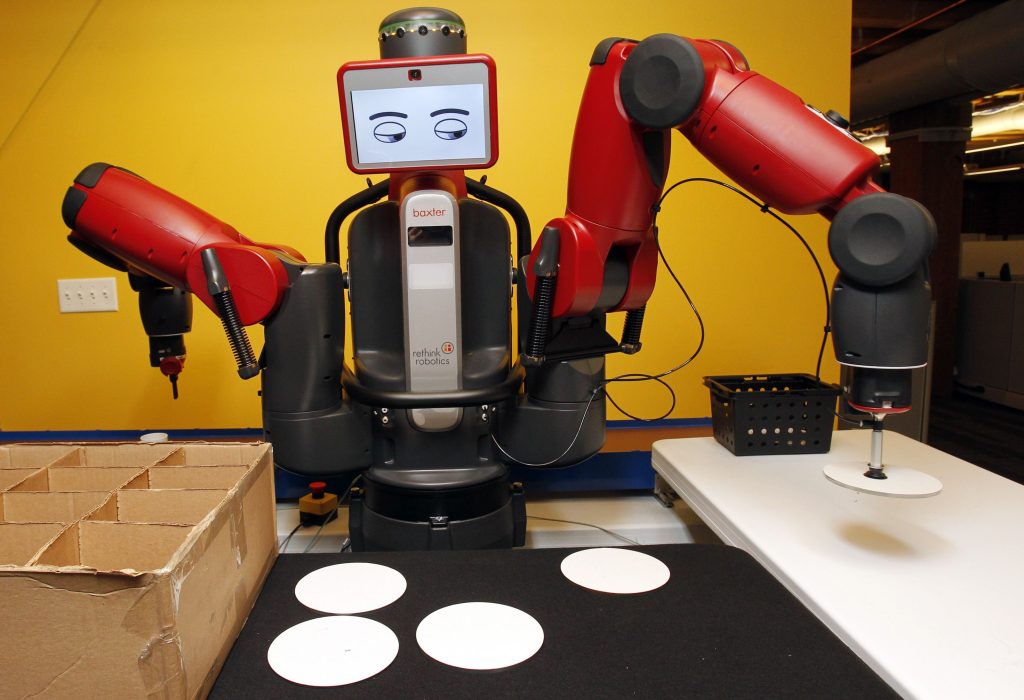
4. Economic Impact: How Robots Are Shaping the Future of Work
The widespread adoption of robots in business is having a profound impact on the labor market and global economy. While robots undoubtedly offer significant economic benefits, including increased productivity and cost reductions, they also raise concerns about job displacement and income inequality.
a. The Threat of Job Displacement
One of the primary concerns surrounding the rise of robots in business is the potential for job displacement. Robots are already replacing humans in several industries, especially in roles that involve repetitive, manual tasks. For example, in manufacturing, robots are taking over assembly lines and quality control positions. In retail, self-checkout kiosks and robots handling stock replenishment are reducing the need for human labor.
While these technological advancements may result in the loss of certain jobs, they also create new opportunities in other areas, such as robot maintenance, AI programming, and data analytics. The key challenge for policymakers and businesses is to ensure that displaced workers can retrain and transition to new roles in the evolving economy.
b. Robots and Productivity Growth
On the positive side, robots have the potential to boost productivity and economic growth. By automating routine tasks and improving operational efficiency, businesses can lower production costs and deliver goods and services faster. The global business ecosystem will likely see greater profit margins, more competitive pricing, and the ability to innovate at a faster pace.
As robots become more integrated into industries such as agriculture, energy, and construction, they will further enhance productivity. For instance, autonomous drones are being used to monitor agricultural fields, collect data on crop health, and apply fertilizers or pesticides more efficiently, contributing to the future of sustainable agriculture.
5. The Ethical Considerations of Robots in Business
While robots offer substantial benefits to businesses and consumers, their deployment raises several ethical concerns. The most pressing of these issues include the fairness of automation, the impact on privacy, and the potential for misuse of AI.
a. Ethical Implications of Automation
As robots replace human workers, the ethical implications of automation must be carefully considered. Business leaders and policymakers must collaborate to ensure that automation does not disproportionately impact vulnerable workers or exacerbate inequality. Measures such as universal basic income, retraining programs, and social safety nets may be necessary to help workers adapt to a robotized economy.
b. Privacy and Data Security
As robots become more integrated into businesses, they will increasingly rely on data collection and processing. This raises concerns about the privacy and security of the data robots gather, especially in industries like healthcare and finance. It is essential for businesses to implement strict data protection protocols and ensure that robots are designed with privacy-by-design principles to safeguard sensitive information.
c. The Risk of AI Misuse
Another ethical concern is the potential for AI and robotics to be misused for harmful purposes. For example, robots could be used in military applications, potentially leading to autonomous weapons systems. It is crucial that global regulations be put in place to prevent the misuse of robotics and ensure that their development and deployment align with human rights and ethical standards.
6. Conclusion: Robots as Catalysts for a New Global Business Ecosystem
As robots continue to evolve and become more integrated into the global business ecosystem, their impact will be profound. From enhancing productivity and driving innovation to improving customer experiences and creating new economic opportunities, robots are set to transform the way businesses operate in the 21st century.
However, it is essential that businesses, governments, and society at large work together to address the ethical concerns, manage the economic impacts, and ensure that the rise of robots benefits humanity as a whole. By fostering collaboration between humans and robots, we can create a future where technology empowers people, drives progress, and enhances the global economy.

